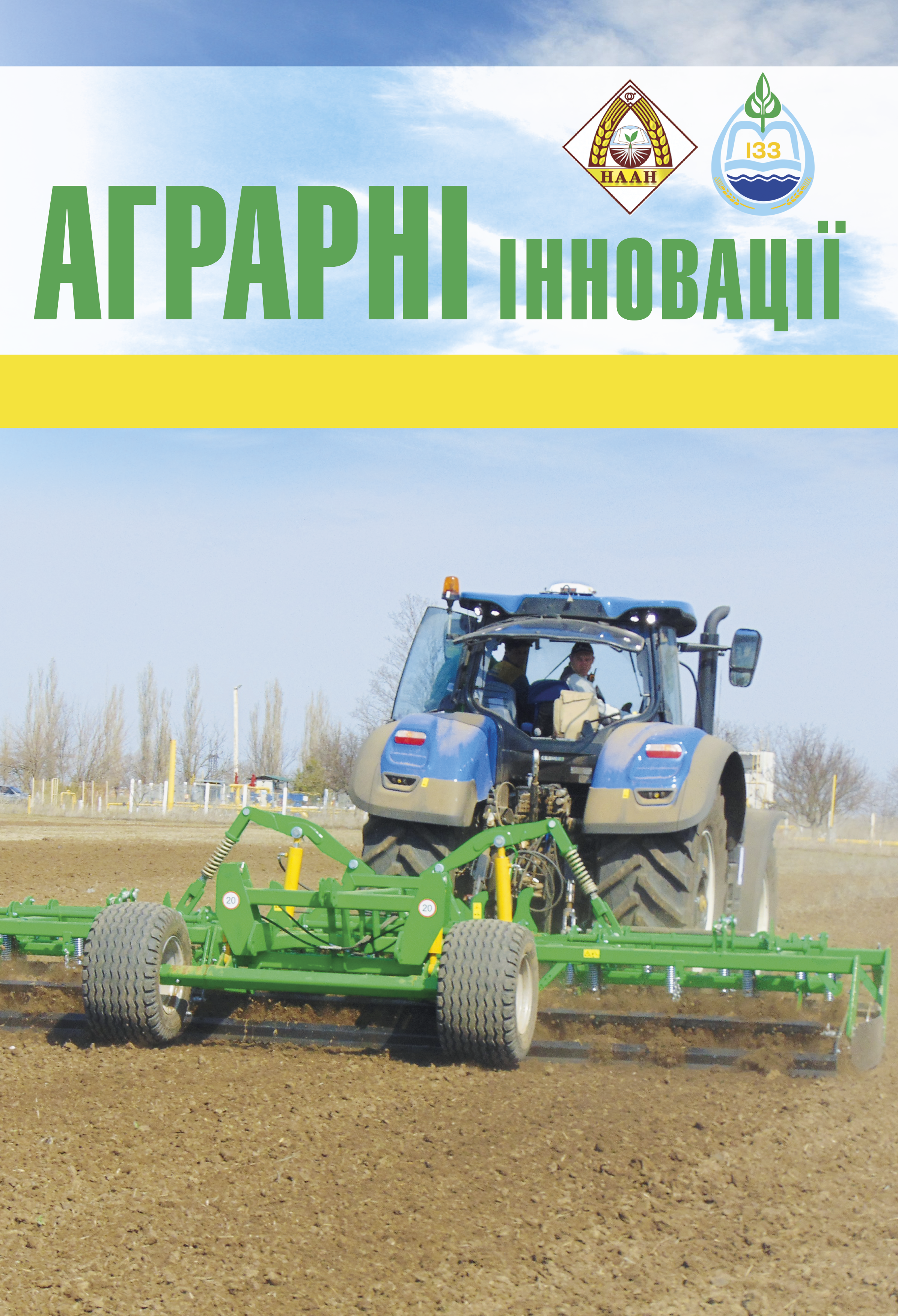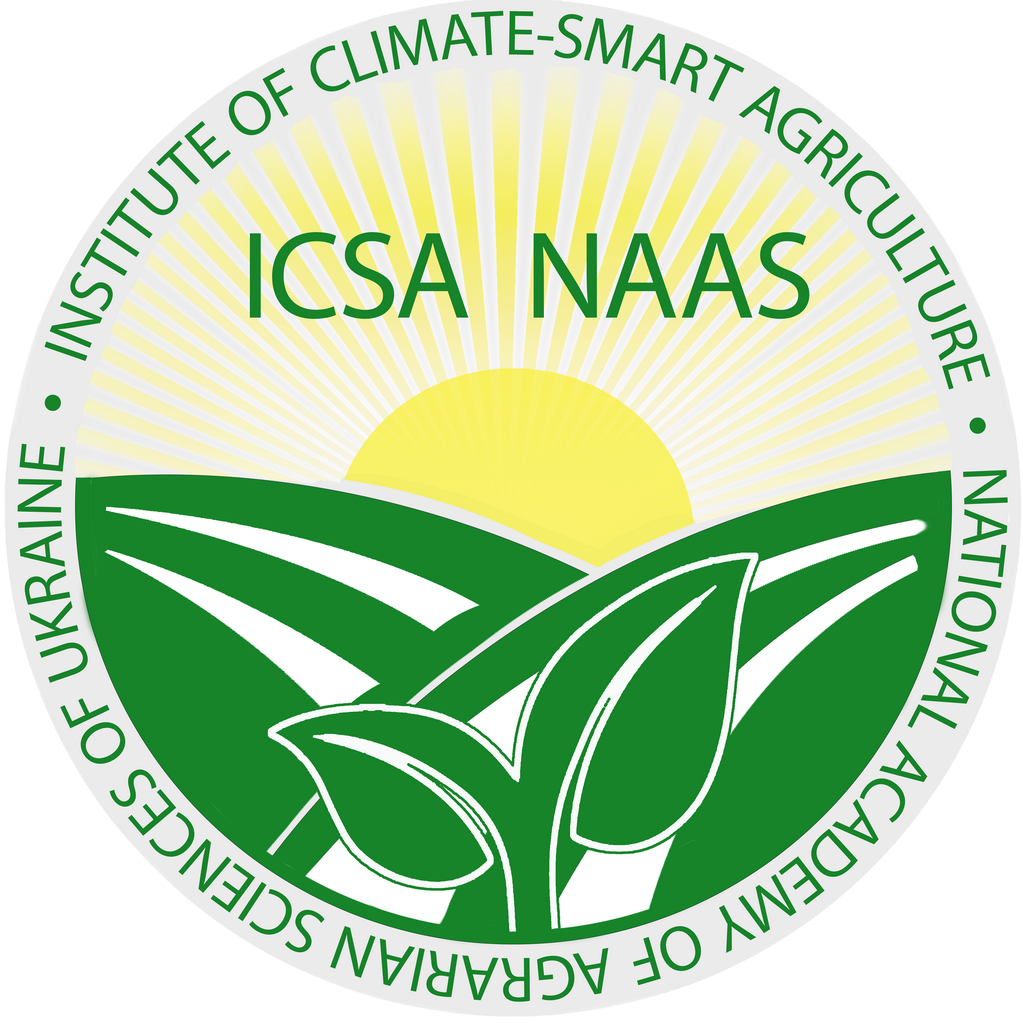Selection of vegetable soybean as a guarantor of food security
Abstract
Goal. To highlight the issue of enriching the plant gene pool with vegetable soybean varieties, selecting the best ones in terms of economic characteristics in order to create new varieties adapted to the irrigated conditions of the Southern Steppe of Ukraine, taking into account climate change. Research methods: field, measurement and weighing, laboratory, mathematical and statistical. Results. In terms of plant height, the difference between the standard and the studied samples of the collection ranged widely – from 9.3 to 58.2%. The correlation coefficient (r) is 0.9412 units. This indicates that with an increase in the height of vegetable soybean plants, the height of attachment of the lower bean increases. In all studied samples of the gene pool, the degree of variation of the indicators of morphobiological traits (SV) ranged from 14 to 25% and were characterized as medium variable. The yield of vegetable soybean seeds largely depends on varietal characteristics and was in the range from 2.18 to 3.06 t/ha, which was an excess over the standard variety by 0.18–1.06 t/ha. The minimum degree of variation (SV = 6.0%) was observed in the studied numbers according to the indicators of the characteristic “duration of the vegetation period”, the average variability was characterized by samples with coefficients of variation (SV) of 17–19% according to the characteristics “mass of beans and seeds” and “productivity”. With an increase in the duration of the vegetation period, the productivity of the crop increases, the correlation coefficient is 0.69036. In the conditions of 2024, the best were: Fora/L 380-2-13, Sac/ Fiskeby V, Karikachi/Fora, Fora/Karikachi, Vesta/Karikachi, Karikachi/Sac, which formed a bean yield from 13.6 to 16.2 t/ha. Conclusions. Assessment of the gene pool of vegetable soybean plants allowed us to identify valuable samples by a set of characteristics – UD0202500 Sac, UD0200903 Fora, UKR001:02859 L 362-2-13, adapted to the extreme weather conditions of the Southern Steppe of Ukraine. The creation of adaptive varieties of vegetable soybean with high nutritional value in the conditions of irrigation of the South of Ukraine is an alternative to supplement and expand the range of high-protein organic products suitable for dietary, sports and children’s nutrition, a guarantee of food security in the region.
References
2. Yatsenko V. V., Poltoretskyi S. P., Yatsenko A. O. Agrobiological evaluation of collection of vegetable soybean varieties in the Forest-Steppeof Ukraine. Plant Varieties Studying and protection. 2021. Vol. 17. No 4. Doi:10.21498/2518-1017.17.4.2021.248991.
3. Johnson D., Wang S., Suzuki A. Edamame: A vegetable soybean for Colorado. Perspectives on new crops and new uses / J. Janick (Ed.). Alexandria, VA : ASHS Press, 1999. P. 385–387.
4. Mentreddy S. R., Mohamed A. I., Joshee N., Yadav A. K. Edamame: a nutritious vegetable crop. Trends in new crops and new uses. Atlanta, GA : ASHS Press, 2002. P. 432–438.
5. Zeipina S., Alsina I., Lepse L. Insight in edamame yield and quality parameters: A review. Agriculturel sciences. 2017. Vol. 2. P. 40–44. doi: 10.22616/rrd.23.2017.047.
6. Yu D., Lord N., Polk J. et al. Physical and chemical properties of edamame during bean development and application of spectroscopy-based machine learning methods to predict optimal harvest time. Food Chem. 2021. Vol. 368. 130799. doi: 10.1016/ j.foodchem.2021.130799
7. Hymowitz T. Dorsett-Morse soybean collection trip to East Asia: 50-year retrospective. Econ. Bot. 1984. 38(4), 378–388. Doi: 10.1007/BF02859075
8. Волкодав В. В. Методика державного сортовипробування сільськогосподарських культур. Випуск третій (олійні, технічні, прядильні та кормові культури). Київ: Алефа, 2001. 76 с.
9. Методика польових і лабораторних досліджень на зрошуваних землях / Р. А. Вожегова та ін. Херсон: Вид-во Грінь Д. С., 2014. 286 с.
10. Бабич А. О. Методика проведення дослідів по кормовиробництву. Вінниця, 1994. 87 с.
11. Кобизєва Л. Н., Рябчун В. К., Безугла О. М. та ін. Широкий уніфікований класифікатор роду Glycine max. (L.) Merr. Харків, 2004. 38 с.
12. Кириченко В. В., Кобизєва Л. Н., Петренкова В. П. та ін. Ідентифікація ознак зернобобових культур. Харків, 2009. 174 с.
13. Петренкова В. П., Черняєва І. М., Маркова Т. Ю. та ін. Насіннєва інфекція польових культур. Харків: ІР ім. В.Я. Юр’єва УААН, 2004. 56 с.
14. Дисперсійний і кореляційний аналіз результатів польових дослідів: монографія / Ушкаренко В. О., Нікішенко В. Л., Голобородько С. П., Коковіхін С. В. Херсон: Айлант, 2009. 372 с.
15. Zhang Y. M., Zhao J. M., Wang M. J. et al. Genetic variance of nutritional uality of vegetable soybean germplasm n southern China. Soybean Sci. 2006. 3:239-243. DOI: 10.4081/ija.2017.872.
16. Li Y. S., Du M., Zhang Q. Y. et al. Greater differences exist in seed protein, oil, total soluble sugar and sucrose content of vegetable soybean genotypes (Glycine max (L.) Merrill) in Northeast China. Australian Journal of Crop Science. 2012. 6(12):1681-1686. DOI: 10.13140/2.1.2841.2163.
17. Agyenim-Boateng K. G., Zhang S., Zhang S. et al. The nutritional composition of the vegetable soybean (maodou) and its potential in combatting malnutrition. Front. Nutr. 2023. 9:1034115. doi: 10.3389/fnut.2022.1034115.






